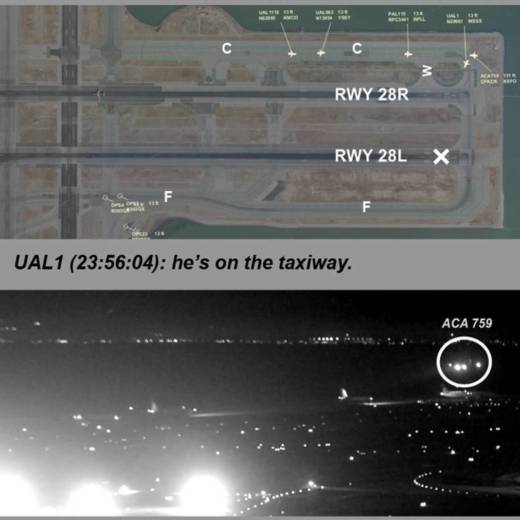Federal investigators say an Air Canada jet coming in for a landing in San Francisco in July came a lot closer than previously thought to hitting four other planes on a taxiway, in what aviation safety experts say could have been a horrible disaster.
The National Transportation Safety Board says Air Canada flight No. 759 was just 59 feet above the ground at its lowest point, flying over a United Airlines jetliner waiting to take off, before the Air Canada plane pulled up, circled around and then landed safely.
Investigators say both pilots on the Air Canada plane thought they were lined up to land on runway 28-Right at San Francisco International Airport on the night of July 7, and runway lights they saw to the left were from runway 28-Left. But 28L was closed and dark, its approach and runway lights turned off, except for a large, 20-foot wide, lighted flashing “X” placed at the threshold; and the normal runway lights they said they saw to their left were actually from runway 28R.
So even though they were cleared to land on 28R, the plane wasn’t lined up to land on it at all.
“Where’s this guy going?” exclaims another pilot on the ground in a radio call to the air traffic control tower. “He’s on the taxiway!”

